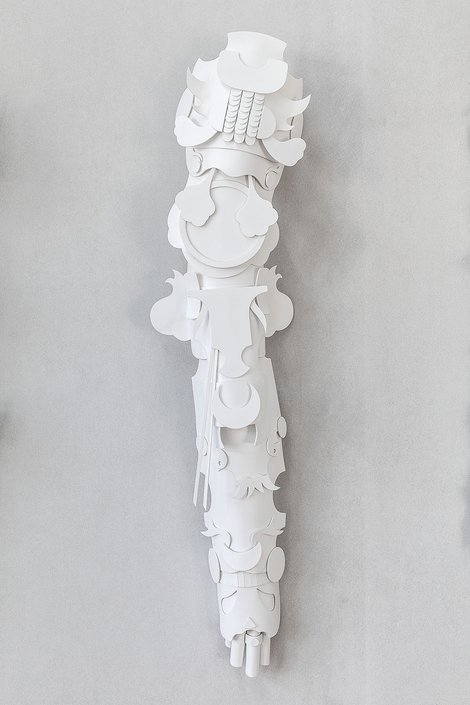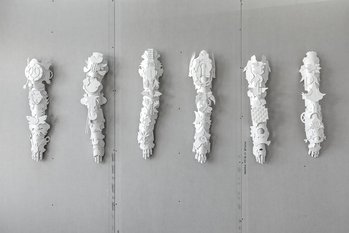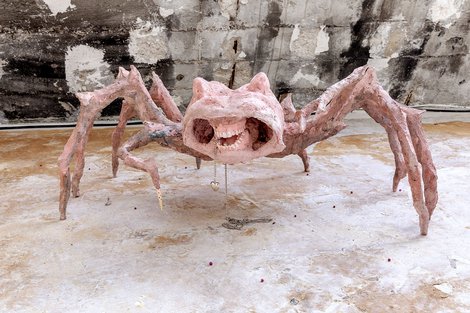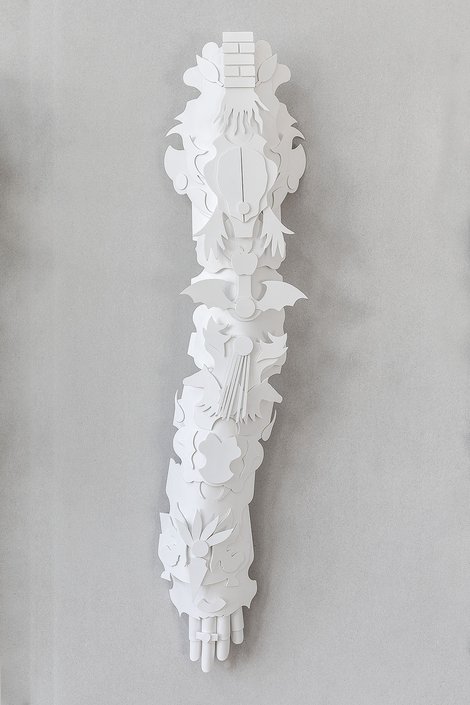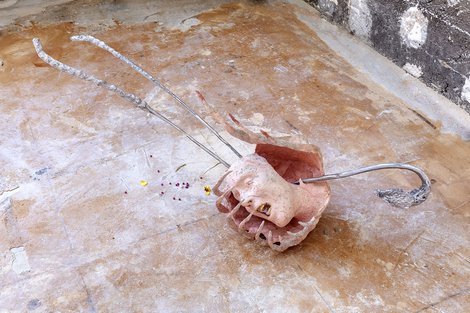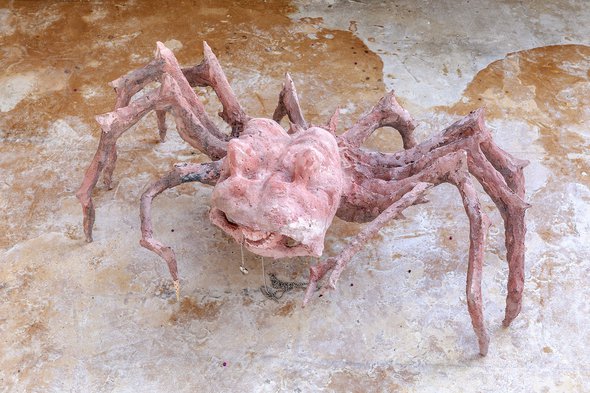Paris Internationale 2017
Nils Alix-Tabeling & Matthieu Haberard
Nils Alix-Tabeling & Matthieu Haberard
GIANNI MANHATTAN is pleased to present new works by Nils Alix-Tabeling and Matthieu Haberard for Paris Internationale 2017.
The presentation demarcates the skin as a border between the inside and the outside, both a boundary and a point of connection. Skin in this case, is understood as both the locus of thinking and as the object of thought. A bodyscape of exposure or connectedness that invites the viewer to consider the borders between bodies.
The presentation demarcates the skin as a border between the inside and the outside, both a boundary and a point of connection. Skin in this case, is understood as both the locus of thinking and as the object of thought. A bodyscape of exposure or connectedness that invites the viewer to consider the borders between bodies.
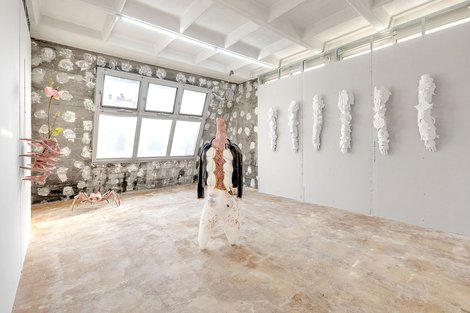
18.10.17—22.10.17
11 Rue Béranger, 75003 Paris, France
> Installation views
GIANNI MANHATTAN is pleased to present new works by Nils Alix-Tabeling and Matthieu Haberard for Paris Internationale 2017.
The presentation demarcates the skin as a border between the inside and the outside, both a boundary and a point of connection. Skin in this case, is understood as both the locus of thinking and as the object of thought. A bodyscape of exposure or connectedness that invites the viewer to consider the borders between bodies.
The presentation demarcates the skin as a border between the inside and the outside, both a boundary and a point of connection. Skin in this case, is understood as both the locus of thinking and as the object of thought. A bodyscape of exposure or connectedness that invites the viewer to consider the borders between bodies.
Nils Alix Tabeling’s sculpture Louve proposes skin in relation to fertility and nonbinary logical systems. The sculpture uses artefacts often associated with deities of fertility; the nourishing breasts, fur, plants and eggs. Following Bataille’s general economy, an organism, unlike the rational actors of classical economy who are motivated by scarcity, has an “excess” of energy available to it, which can be used productively for the organism’s growth or it can be lavishly expended. As an analogy, fertility is thought here outside of reproductive functionality and utilises ideas of pathogenesis, rotting, transmissions of ideas, the infestation and degradation of a body to enable the emergence of an amorphous drive that superimposes matter over bodies and cytokinesis over monotheistic religions. Alix-Tabeling’s practice is driven by a fascination with witchcraft and pagan rituals, translating the mutilated leather jacket into the hides of an animal, enabling the communication with hidden powers and the natural world.
Matthieu Haberard’s six armoured arms have detached from their bodies. Exposed as trophies, they are vestiges of fantasized eras and relics of phantom battles. Haberard echoes the idea that armour, an enforced artificial skin for protection, encases a body, but the material he uses – a mouldable plastic used in Cosplay – incapable of protection, fulfils and reiterates solely a decorate function. The design is inspired by Chinese and Japanese traditional martial patterns, distilled to their most minimalistic reduction. Some of the patterns are reminiscent of painted kabuki masks, and animal faces, evocative of the totems used to usher in natural spirits. His deconstructed armour puts in perspective the worries and fears responsible for the creation of tensions within and between our societies.
Matthieu Haberard’s six armoured arms have detached from their bodies. Exposed as trophies, they are vestiges of fantasized eras and relics of phantom battles. Haberard echoes the idea that armour, an enforced artificial skin for protection, encases a body, but the material he uses – a mouldable plastic used in Cosplay – incapable of protection, fulfils and reiterates solely a decorate function. The design is inspired by Chinese and Japanese traditional martial patterns, distilled to their most minimalistic reduction. Some of the patterns are reminiscent of painted kabuki masks, and animal faces, evocative of the totems used to usher in natural spirits. His deconstructed armour puts in perspective the worries and fears responsible for the creation of tensions within and between our societies.
